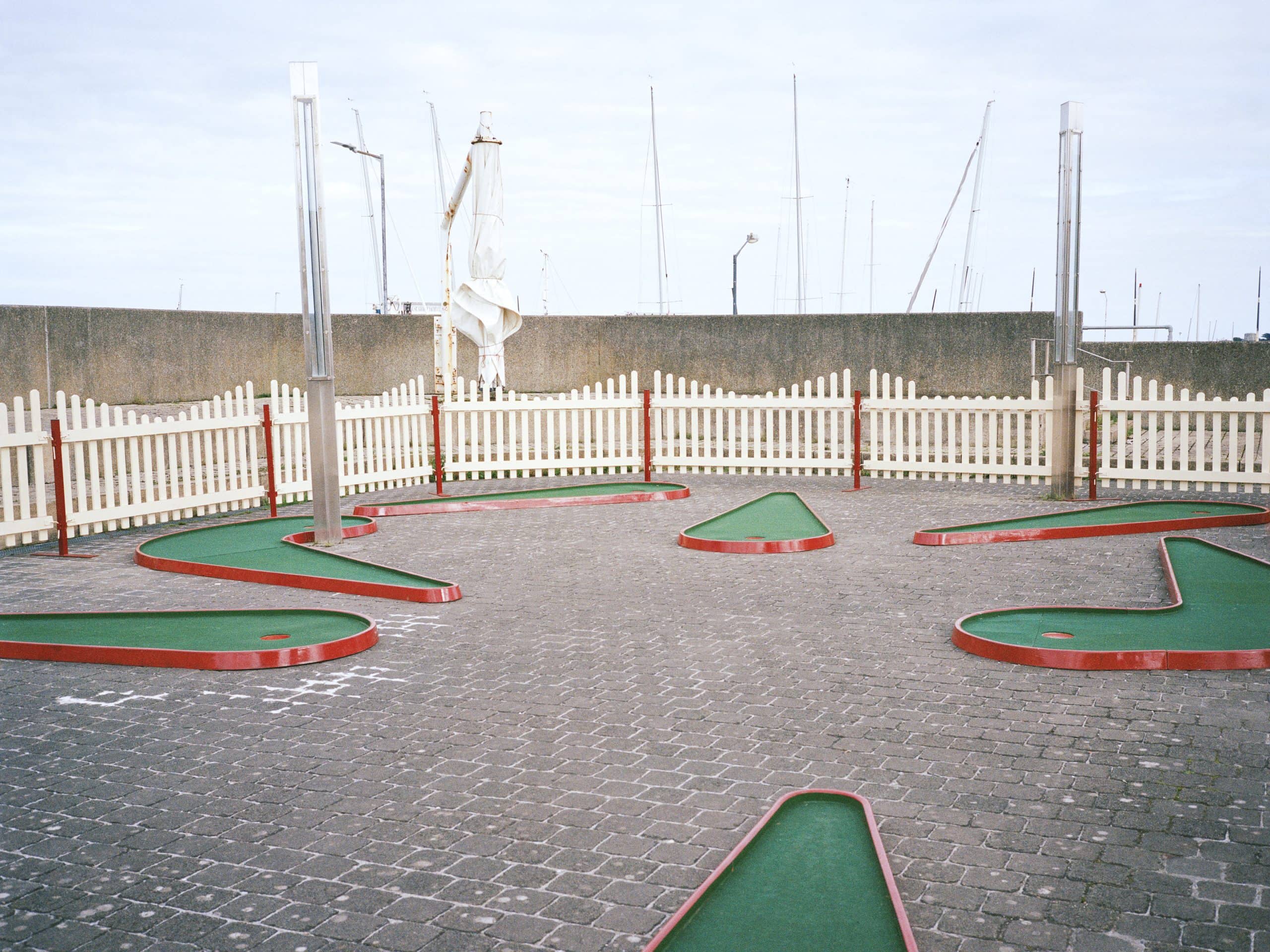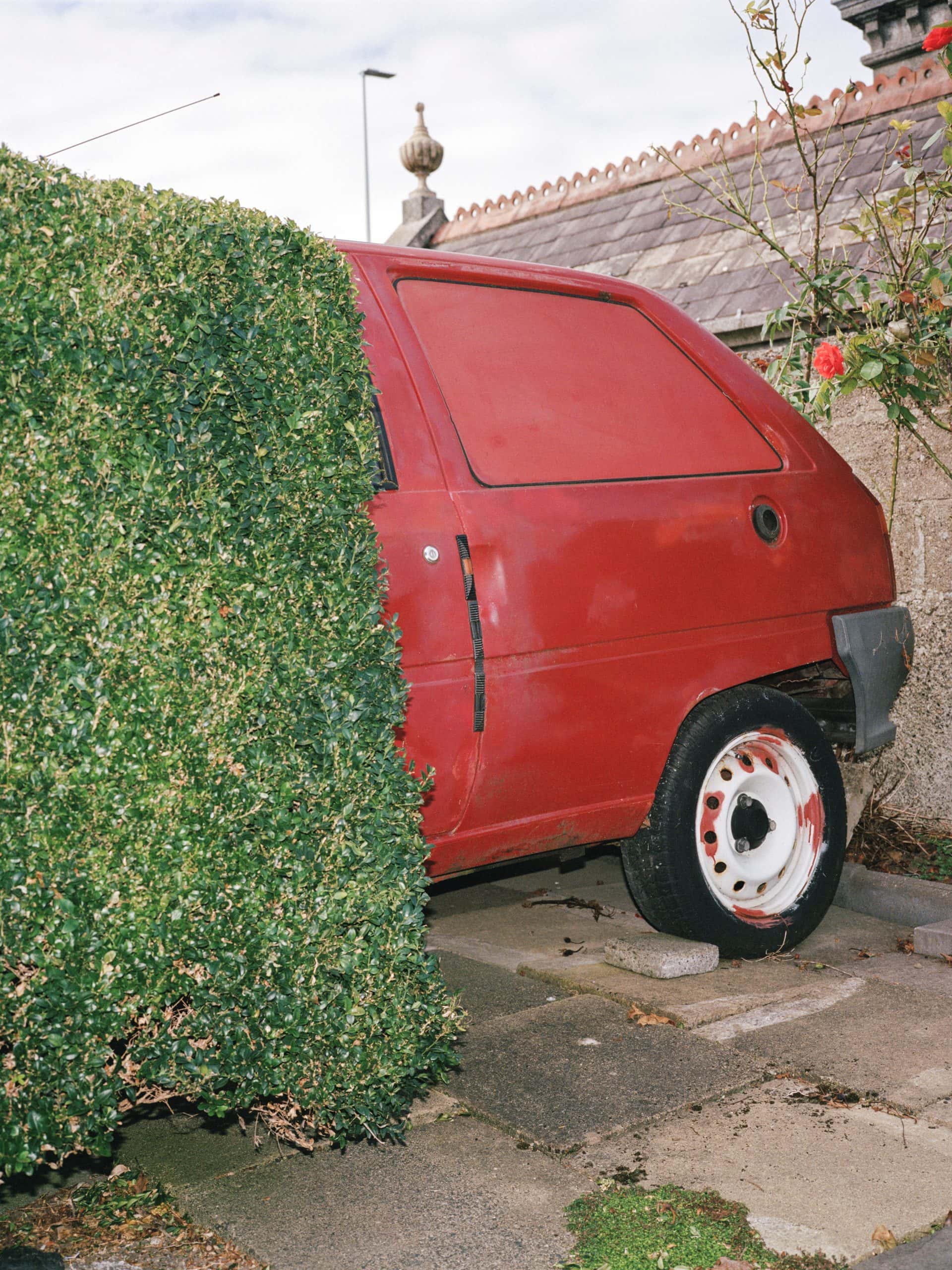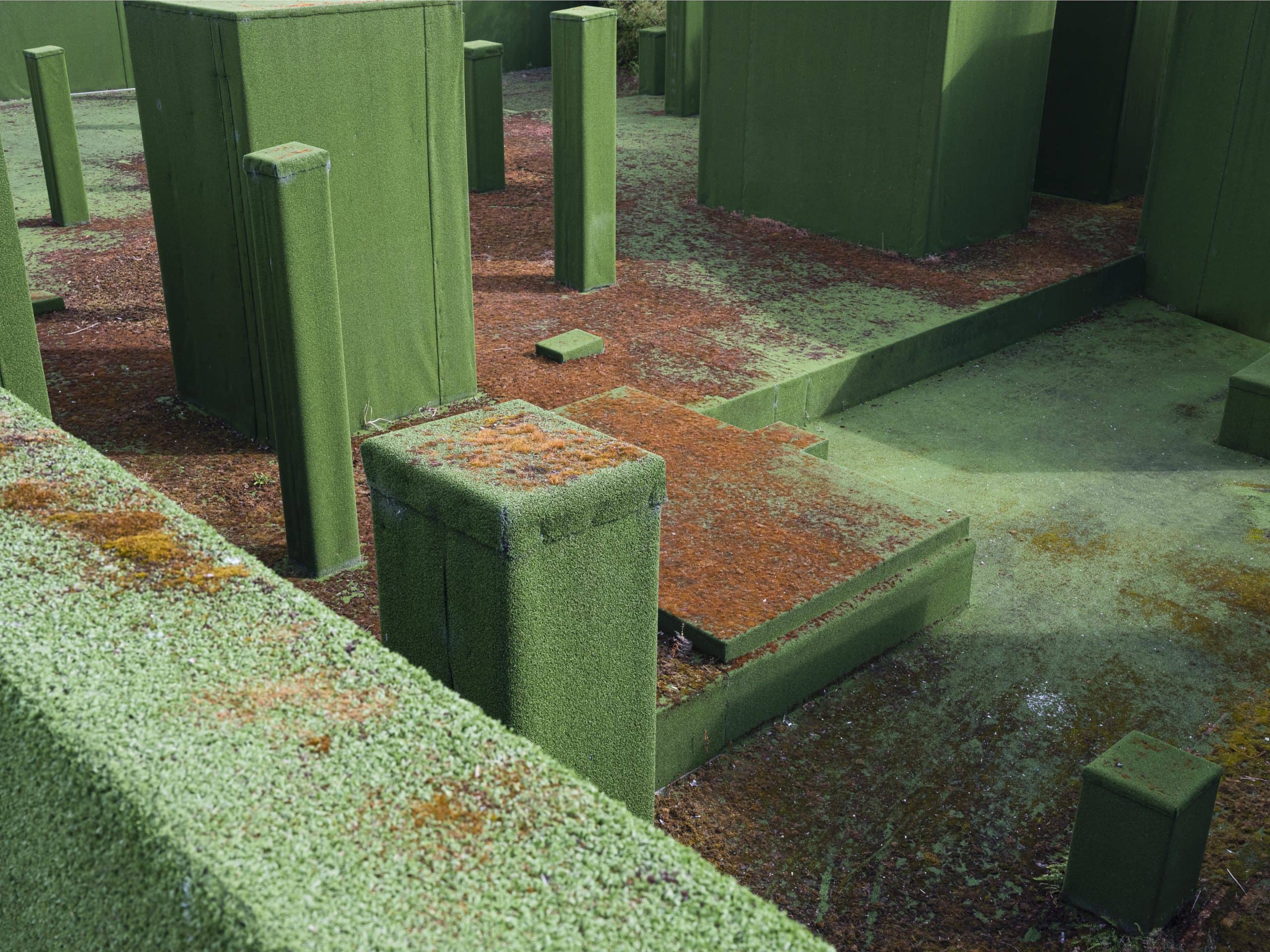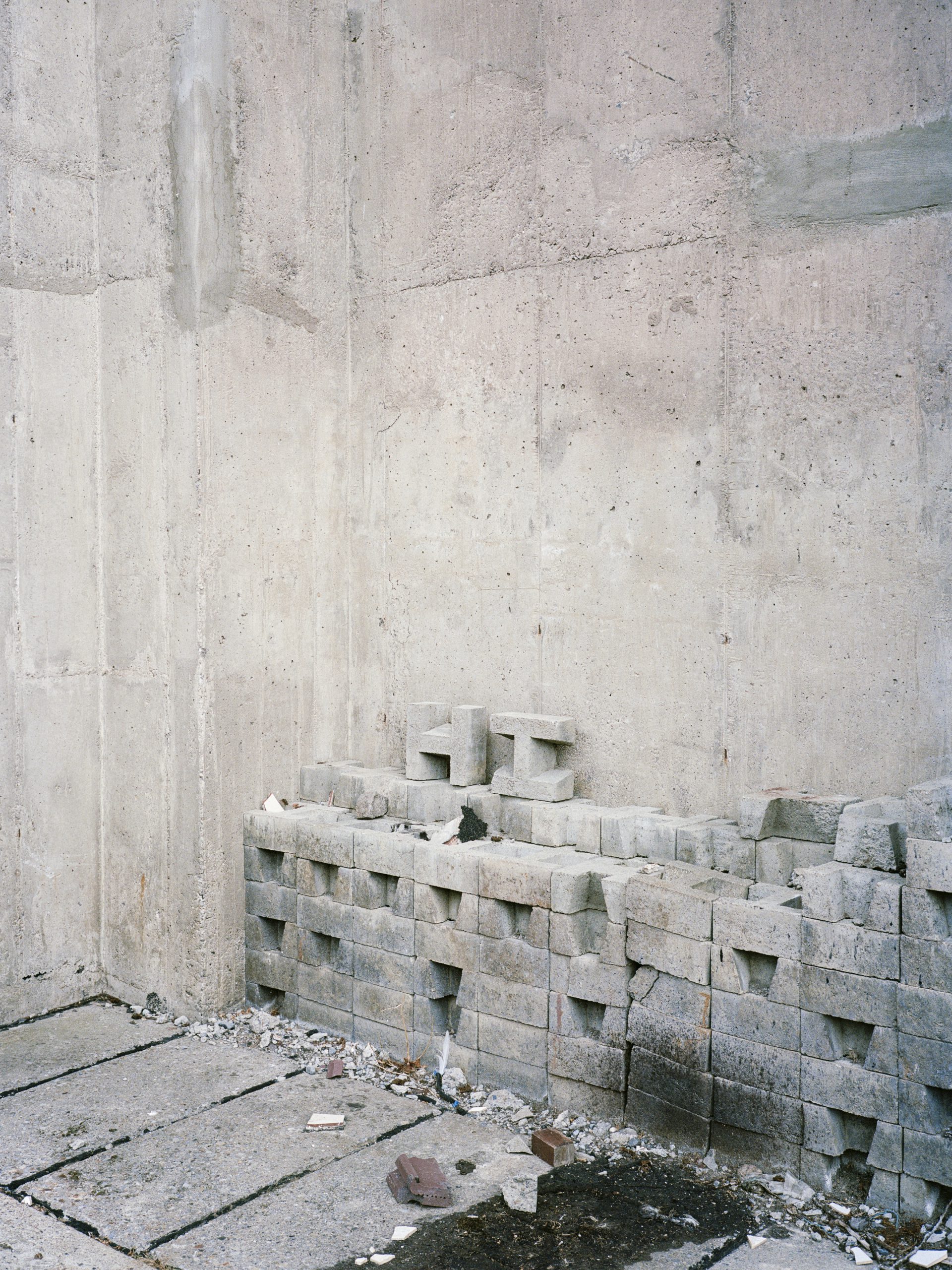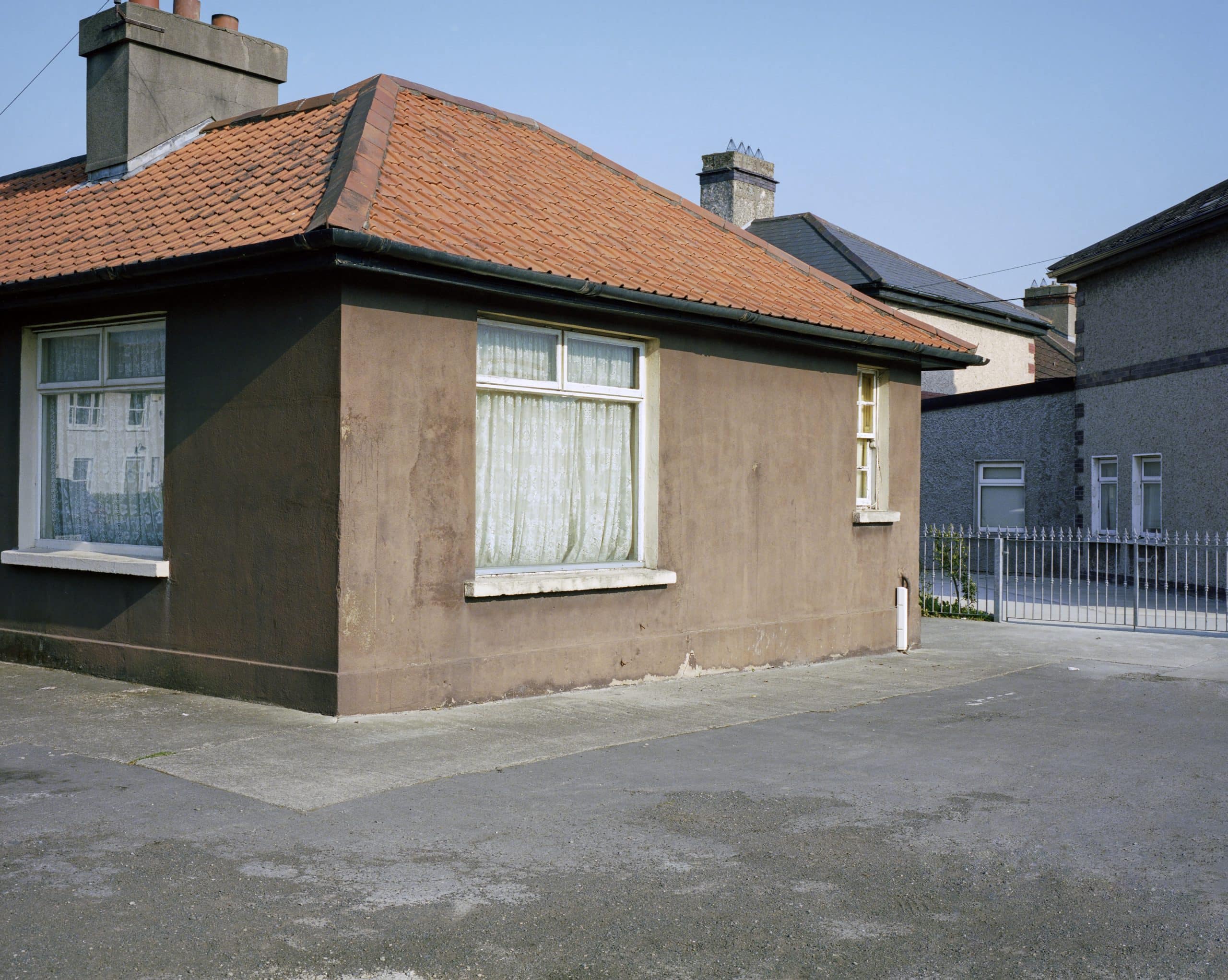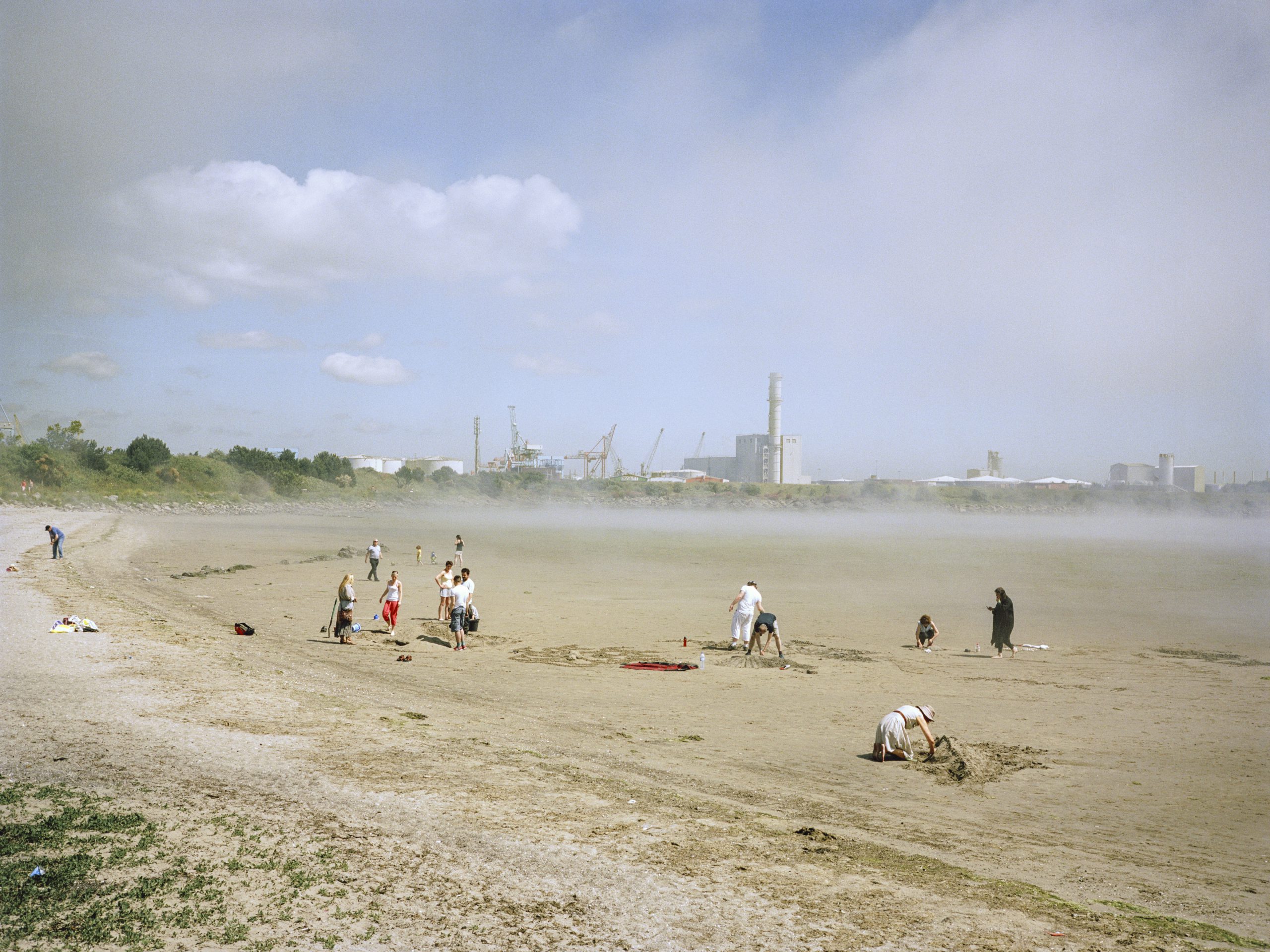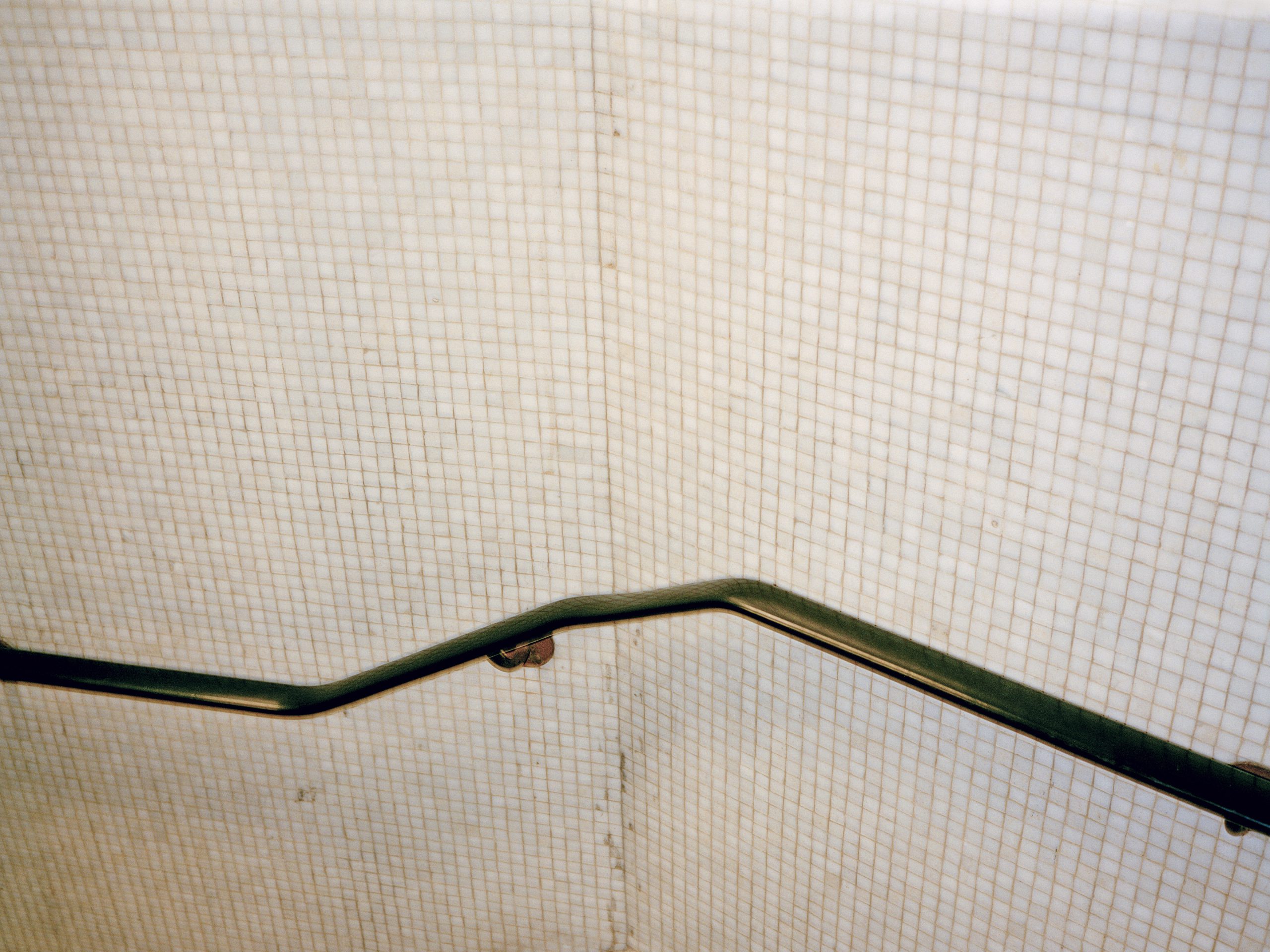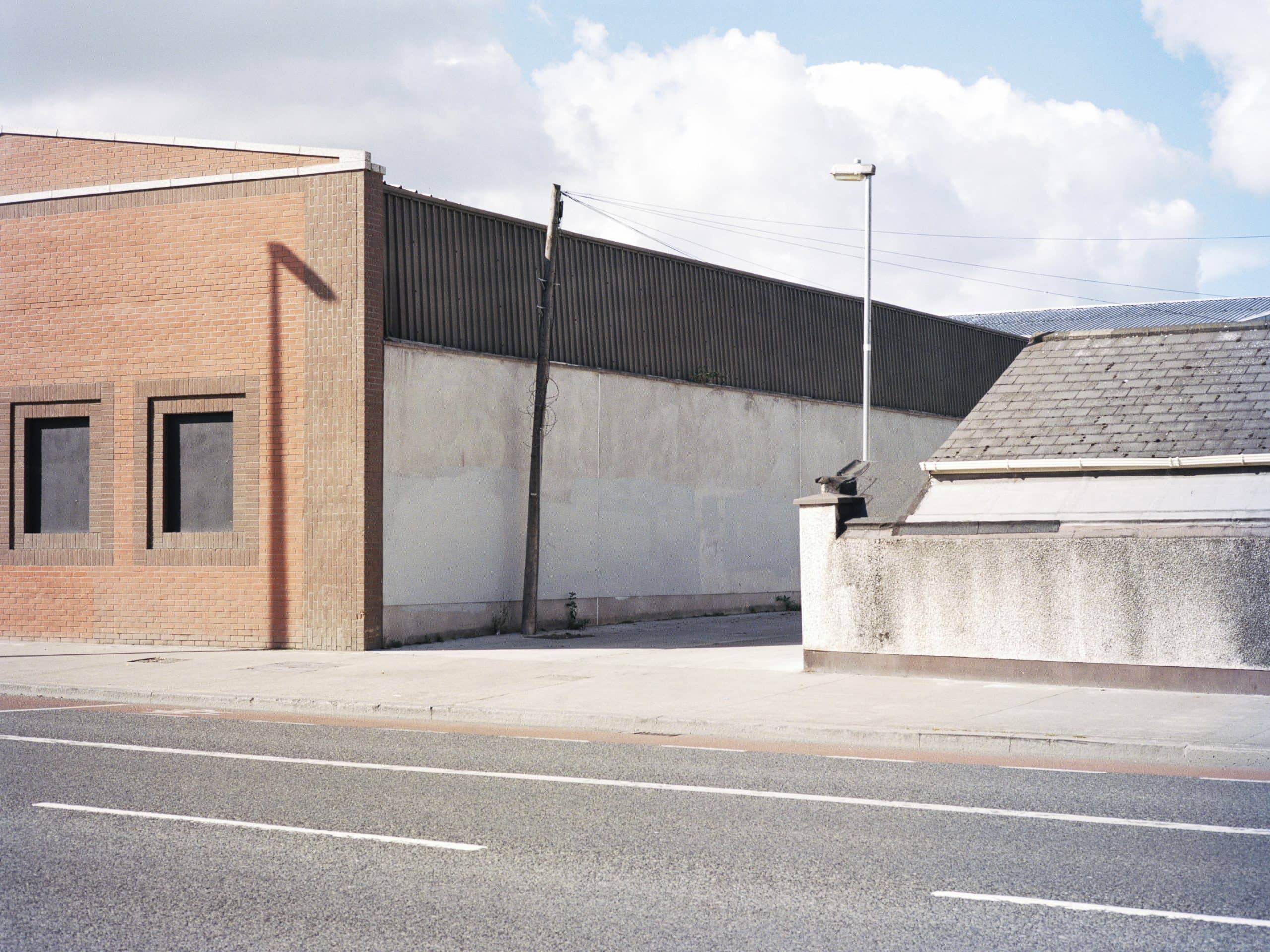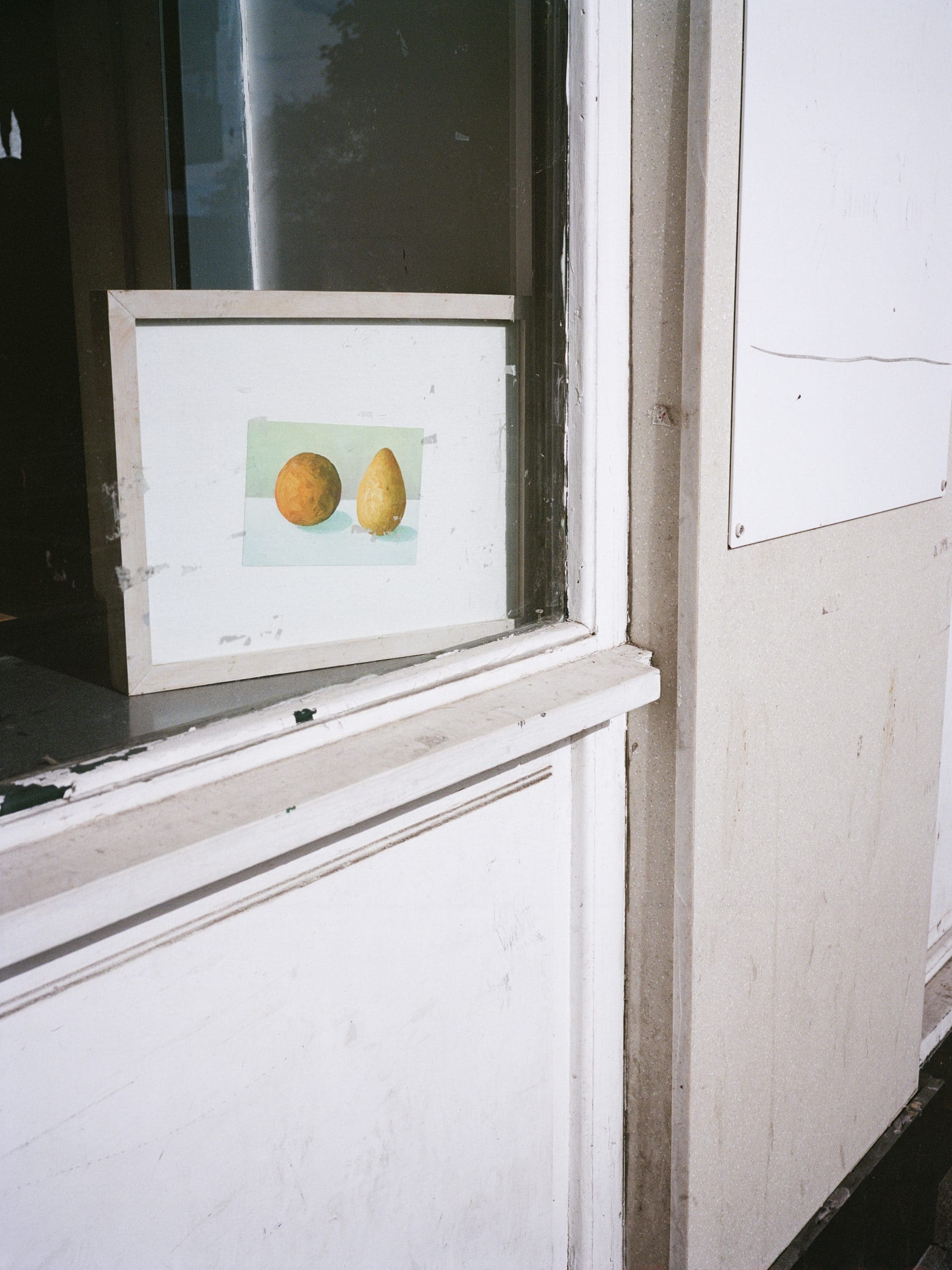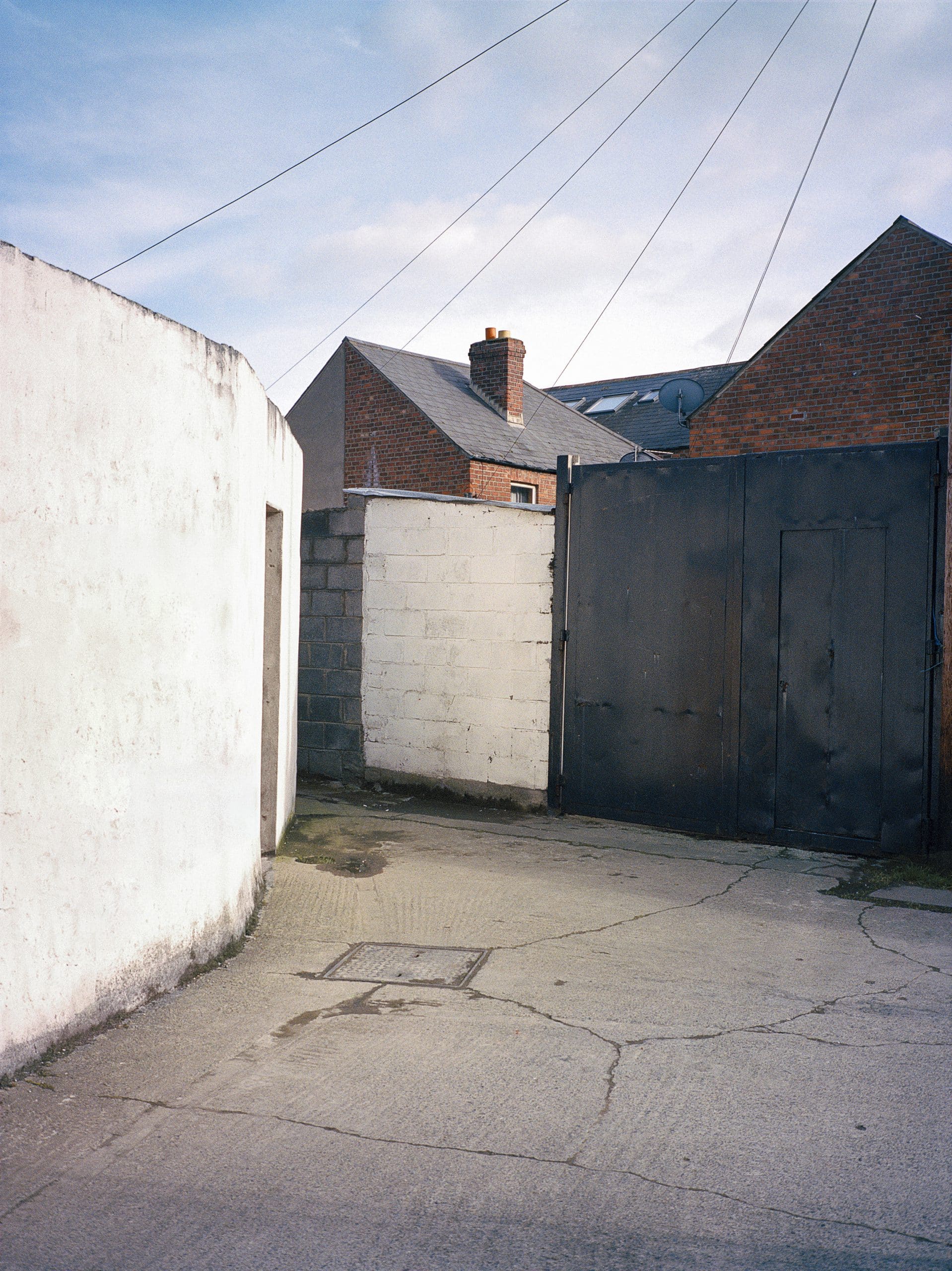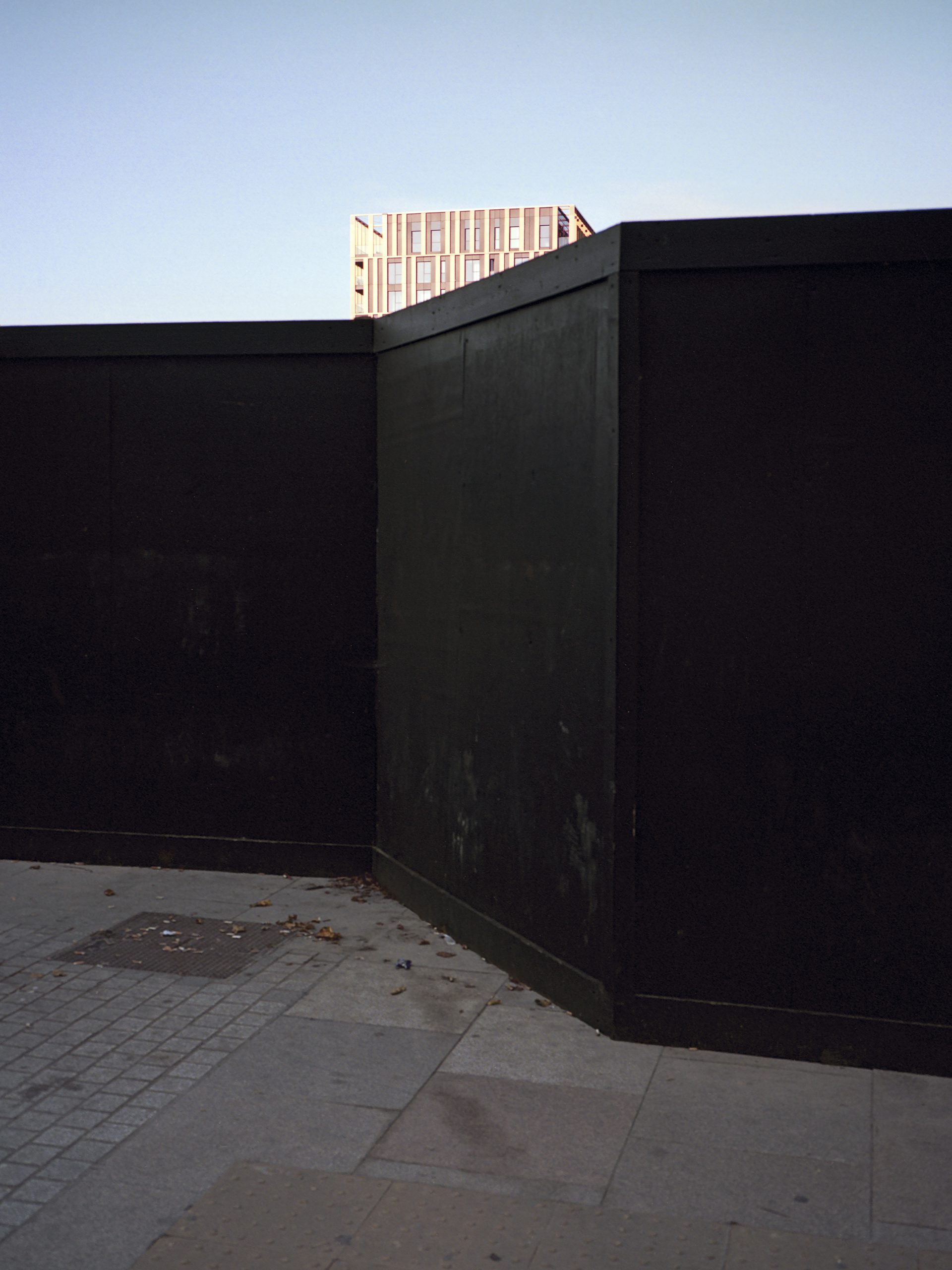Cities are complex entities that reflect the social, economic, and historical forces at work within them. These forces determine the pattern of a city’s streets, the character of its buildings, what people do, and where they live. A long-term photographic survey of his adopted home city, Shane Lynam’s Pebbledash Wonderland, connects the lived experience of place to these otherwise intangible energies shaping the world around us. Dublin, the ‘wonderland’ of the title, serves as a case study for the nature of the contemporary city, subjected to unprecedented pressures in the wake of global economic and social change. This body of work continues Lynam’s concern with urban space and the built environment in cities across Europe, with previous projects Fifty High Seasons (2018) and Contours (2013), but it also represents a significant shift in his practice toward more subjective and narrative ways of thinking about photography. A concern with the experience of place is made explicit by the loose, first-person quality of Lynam’s picture-making, which evokes the sense of a chance encounter, of something always around the next corner.
The title that Lynam has chosen evokes something of the genuine optimism that accompanied programmes for urban and suburban development from the early 20th Century up to the present day. In Dublin, the move from tenements to newly built houses and council flats benefited many, but also brought new problems, severing family and community support networks, which could not be easily recreated in new locations, often cut off from vital services and transport links. More recently, the unrestrained growth of the Celtic Tiger period—itself another symptom of the changed global economy, representing a new nadir in speculative market practices—fundamentally altered our relationship to the provision of homes and housing. As a result, there is a tension in the spaces that Lynam traverses that has to do with how ‘space’ itself is produced and controlled, in turn determining how it is experienced. This becomes a tension in the pictures and in the work overall.
Without making Pebbledash Wonderland into a polemic on development, these tensions are most apparent when Lynam focuses on scenes where there is an interface between some new construction and the existing fabric of the city, which often reads like a disjuncture, an imperfect meshing of old and new. In another rendering of the ‘wonderland’ from the title, sometimes these constructions are presented as dreamlike, free-floating signifiers of progress, such as the corner of a golden tower that peeks over the edge of an ominous black hoarding in one particularly evocative image. What stands out and what becomes most meaningful is the lack of integration between the parts of the picture, and by implication, the parts of the city. This particular wonderland is insubstantial, not really connected to the life of the place or the people who live there, and as such is cut off from the communities that might sustain it or make it real, bringing it from the fantasy realm into the world of human experience.
Given this, the language of fracture, of the fragment in some undefined relation to the whole, is entirely appropriate, and indeed, visual figures of tension and disjuncture are dominant throughout the work. All of the spaces that Lynam pictures are built around them in some way, and he often frames his subject to emphasise the elements that seem to clash and pull in opposite directions. This covers a range from the odd patchwork of styles that characterise the city suburbs—archaeologies of changing taste and changing economic circumstance—to a whole universe of stray objects, none of which seem to be where they belong. The character of neighbourhoods changes, rising or dropping in status, businesses open and close, fashions come and go. All of this leaves a trace, which Lynam registers as fracture, but also serves as a way to acknowledge, however partially, the accumulated weight of their associated histories. The concentration on the built environment of the city is significant here precisely because of the extent to which it preserves a record of evolving social dynamics, especially in a city as old as Dublin.
Human figures do occasionally break Lynam’s concentration on the spaces and textures of the city’s built environment. These are most often solitary characters, alone in the frame, and many of them face the viewer directly, as if presenting themselves for inspection, with nothing to hide. However, the air of apparent straightforwardness is undercut by the persistence of unexpected gestures and incongruities in these portraits. Why does the grey-haired gent have a newspaper in his mouth? Where is the workman striding off to with the ‘shopping’ sign on his back, like a latter-day Atlas? There is something off-kilter and inward-looking about many of these images. Taken in context, the uncanny elements of the portraits especially are further indications that what we are dealing with here is not necessarily the ‘real’ city, but one that has been mapped, experienced, represented subjectively, imaginatively by Lynam. We begin to read the strangeness of these figures back into the city itself; they stand in for the inhabitants who have left their traces everywhere, fundamentally shaping the spaces they move through, but remain mostly unseen.
At other times, human presence is deftly connected to the landscape, such as with the extraordinary image of a crowd on the beach at Sandymount, just outside the city. The figures in the foreground engage in various activities and groupings with the frozen immobility of a de Chirico painting, while vague industrial structures rise in the background, the elements separated by a band of what looks like fog cutting through the centre of the frame. The marking and digging of the sand, a primitive manifestation of the urge to shape and control our environment, echoes the construction in the background, shown by the cranes ubiquitous to Dublin’s skyline, alluding to the constant transformation of the city. However, the overall impression of the image is once more of fracture and dis-integration. It suggests that this shaping urge has been magnified into something unwieldy, something inhuman, given by the stark geometry of the industrial forms, which loom over their human originators, taking on a sinister life of their own. This image literally and imaginatively illustrates the fundamental ruptures of contemporary space, its capacity to contain and enfold multiple experiences, functions, and perspectives, none of which entirely or easily blend together.
It is significant that throughout the work Lynam holds the issue of ‘development’ at somewhat of the same remove as he does in this key image. It is a spectre, something glimpsed in the distance but rarely confronted directly. Far more prominent are the numerous small interventions in the built fabric of the city, a patchwork of bricolage and make-do forming a space inhabited by people who shape it in their own unique ways. The pristine patch of white paint down some back alley or the line of bricks hastily added to the top of a wall are part of the fundamental textures of the city, the material expression of human needs and intentions, however minor they may be. Lynam’s Dublin is still a wilfully, weirdly human city. He offers a timely reminder that the trend towards homogeneity is countered by a sense of belonging that meshes the real place with the maps we carry of it in our heads, an inner city of memory and imagination. This projected space, at once inside us and around us, is the true subject of Pebbledash Wonderland, as much as the material, physical city. Even developers must dream.
